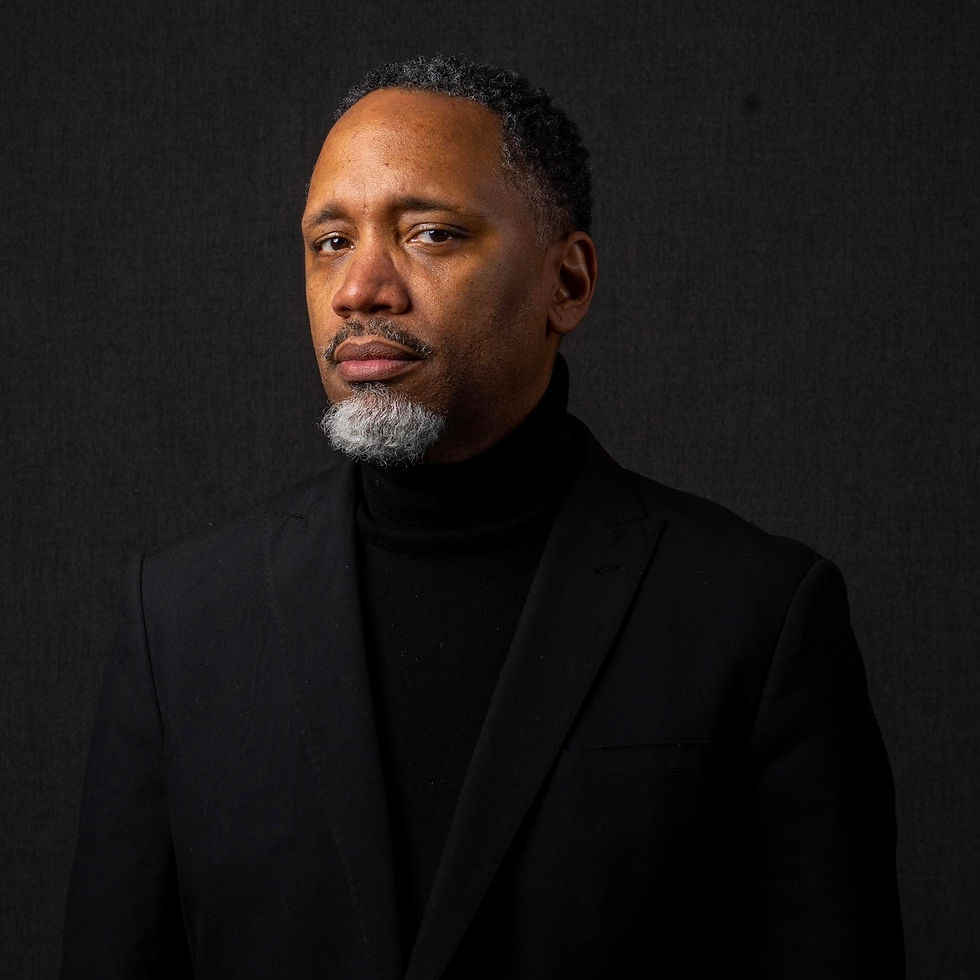AS IS | Shawn Theodore
- katcintulova
- Sep 17, 2022
- 4 min read
Updated: Sep 19, 2022
Photographer
From Stuttgart, Germany
Based in Philadelphia, US
We talked with fascinating Shawn Theodore about his photography journey, components for a great shot, nature of the inspiration, upcoming plans, and much more
A: Please, tell us a bit more about yourself. What brought you into photography?
S: My mother and her family lived in Devon, PA, then a rural suburb of Philadelphia, but my father was from the city, West Philadelphia to be exact. Throughout the 70s, I was hustled back and forth between my mum's bucolic world and my dad's urban one.
My first camera - which I still have and shoot with - was a Pentax K-1000; my mom gave it to me when I was 13. My high school was in the center of downtown Philadelphia, at 13th and Cherry Streets. It wasn't the downtown of today; it was the post-manufacturing era, dirty downtown. But I grew up during the Golden Era of hip-hop in one of the most creative cities one could live in at the time. Graffiti was everywhere, every neighborhood had its own style of clothing, we had our own style of rap music. Every morning I couldn't wait to get out of the house to head to school, even though most of the time I didn't stay the whole day. There was just too much happening.
In 2008 I went to an opening at MoCADA to check out photographer Jamel Shabazz's work and to my surprise, he was there. I worked up the nerve to tell him how much his photography meant to me, as it reminded me of growing up in Philly in the 80s. We hit it off so well that we spent the day walking and talking through Prospect Park, taking in a master class on street photography one person at a time for an entire day. Brother Shabazz took a photo of me while I was taking my very first street portrait, and my second shot is a portrait of him. His kind and calm approach toward teaching me, and how he spoke to his subjects, impressed me so much that it ignited my desire to get back into shooting again.
A: What inspires you the most?
S: My 8 year old daughter, Ghazi Aizen. Her love for art and creativity far surpasses mine when I was her age. When I moved into my latest studio space last year, she outdid herself. The building is a former old-fashioned school, so there’s this chalkboard in my studio space. She immediately took to it and drew this incredible scene of fantasy creatures and spaces, and she did it in less than 15 minutes. Her zest for creating is so natural, and it’s an amazing thing to witness in action. She keeps me rooted to that part of myself that I sometimes feel can be lost in this hyper-social media driven world.
A: Do you have any specific rituals while working(creating)?
S: My work itself is spiritual. The act of creating Afromythological images is intended to inspire ritual in others. The ideation of the work comes to me through dreams or meditation, less often they evolve from pre-existing works that depict Black people or moments of Blackness that I believe should be reexamined or reenvisioned. The one ritual of my practice that’s the most important is to 'rest' with the work once it’s complete. I like to live with the work to understand the feeling it’s emanating.
A: What would you recommend to someone new to photography, what to begin with?
S: I would suggest simple experimentation with the making of the image. Question everything. Try anything. Try to unlearn the things one already knows to make room for new ideas. Free yourself from direct influences to allow photography to become your own method of expression.

Photo credit: German Vazquez (https://germanvazquez.com/)
A: Top 3 components for great photography?
S: One of the coolest things I could suggest learning is manipulating light and shadow to create shapes that in turn create the illusion of dimension and depth. After that I would say ingenuity, pushing the boundaries of what is and isn’t subject matter makes for a great image. Lately, I’ve been driven to rethink the print as an object, and what is a photographic image, and when is the image 'final'. Lastly, I would say that knowing when to move on from a project to challenge one’s practice is important. Sometimes I’ll talk with my peers and they’re held captive by projects that they’re unsure of how to end.
A: I’ve never taken pictures of ... but would love to:
S: I’ve never made portraits of my entire family, both sides, as many relatives as possible… that would be interesting.
A: Must-read books to understand the art of photography?
S: That’s a great question, I’ve read history books about photography but I’ve always been disappointed at the lack of cultural depth and understanding. I will say that Dawoud Bey's Seeing Deeply, Vivian Maier's The Color Work, and Where We Find Ourselves, The Photographs of Hugh Mangum would be the three books I would give to someone just starting out in photography.
A: If you could change one thing in the world of photography - what would it be?
S: I would change the way in which the history of photography is taught. Too often this history is devoid of the inclusion of Black, Brown, Asian and Indigenous people, women in general and the presence of the LGBTQIA community. These communities were subjects of early photographers, and not always photographed with human dignity at the forefront. Also, the photographs the individuals who represent these communities made as creators deserve a more critical examination.
A: Please, share your favorite quote (not necessarily related to the photography)
S: "Ars est celare artem." (It is art to conceal art.)
Thank you!










Comments